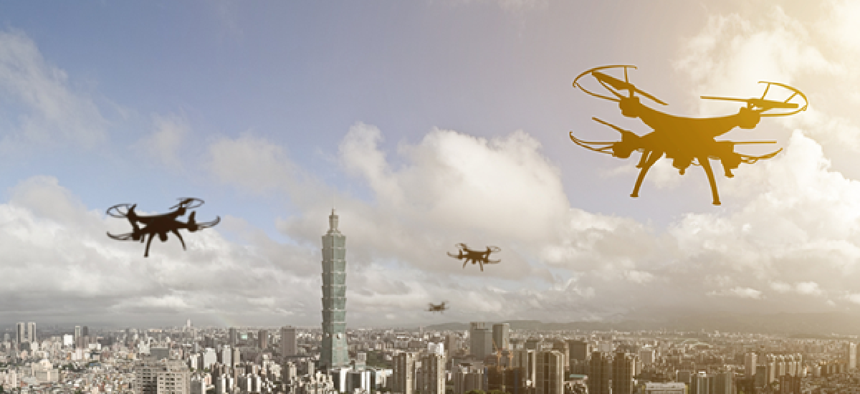DOD: Counter-drone defense calls for data fusion


Connecting state and local government leaders
The Defense Department wants data, software and analysis to be shared across command and control systems.
To better counter small unmanned aerial systems (sUAS), the Defense Department wants to move away from proprietary systems designed to counter specific drone threats and toward an open architecture-based solution. The goal is to develop standardized requirements as well as data and command and control system interfaces that can ingest sensor data from multiple existing interfaces, analyze that data to assess the potential threat and present actionable information to C2 systems.
Currently, counter-sUAS solutions are being designed by the different services for specific threats and are unable to exchange software modules or fuse high-level data to effectively address broader CUAS efforts. Additionally, C2 and sensor systems use different, proprietary software architectures that prevent capabilities from being used across multiple C2 systems, leading to redundant systems.
Current solutions also force CUAS operators to collate the data they receive to get a clear picture of a drone threat and possible impacts. This means different operators may arrive at different conclusions about threat levels based on the same or similar data.
To build a more efficient CUAS program, DOD is calling for prototypes of a High Level Data Fusion capability designed for an open-systems architecture. The architecture would allow data and various software modules to be shared with other HDLF-built C2 systems. It should include internal and external data interfaces and data flows so that equipment and components are interoperable across CUAS systems regardless of manufacturer. DOD expects the HLDF architecture to be scalable and extensible so it can accommodate advances in sensors, drones and CUAS systems.
The open HLDF architecture should be able to be deployed on a single vehicle or across a military base where multiple operators monitor different areas of the common operational picture.
Besides improving existing C2 systems, this open HLDF architecture will speed development of systems to counter new threats and make it easier to issue update contracts and test best of breed software modules, DOD said in its request for solutions.
NEXT STORY: NIST tackles video analytics for public safety




